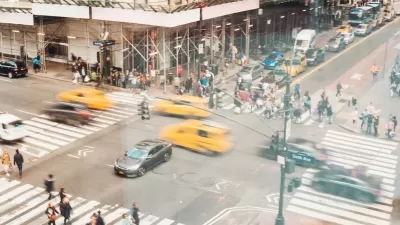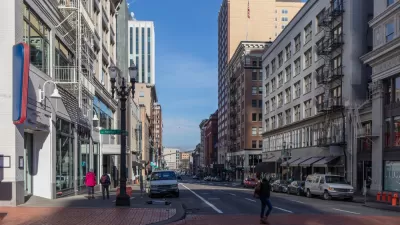Despite a nationwide rise in traffic fatalities, almost half of U.S. states have transferred federal road safety dollars to other projects.

According to an article by Daniel C. Vock in Route Fifty, “nearly half of state transportation departments have diverted money from Washington specifically designated to making highways safer,” prompting concerns among some members of Congress. “U.S. Rep. Peter DeFazio, an Oregon Democrat who chairs the House committee on transportation and infrastructure, expressed his frustration over the common practice at a recent hearing. DeFazio said it was ‘very disturbing’ that, in the five years leading up to September 2021, 23 states transferred money out of the federal Highway Safety Improvement Program for other uses.” It should be noted that states are legally allowed to transfer up to half of the funding to other transportation-related uses.
“At a time when traffic fatalities remain at unacceptable levels and have increased substantially in every state over the last two years, we believe that the authorized amounts for HSIP should be the absolute minimum dedicated to safety improvements and transfers out should not be acceptable,” said Peter True, a spokesperson for the Democrats on the committee. Among the 23 states that moved safety funding to other uses are Wisconsin (48 percent), New Jersey (44.4 percent), and Maryland (41.3 percent).
Vock notes that “Several states added money to their program instead. In fact, both South Dakota and California more than doubled their allocation. Other states that diverted more money to the program were North Dakota, Georgia, Arkansas, Alaska, Montana, Washington and Virginia.”
FULL STORY: The States Shifting Road Safety Dollars Away From Safety Programs

Americans May Be Stuck — But Why?
Americans are moving a lot less than they once did, and that is a problem. While Yoni Applebaum, in his highly-publicized article Stuck, gets the reasons badly wrong, it's still important to ask: why are we moving so much less than before?

Using Old Oil and Gas Wells for Green Energy Storage
Penn State researchers have found that repurposing abandoned oil and gas wells for geothermal-assisted compressed-air energy storage can boost efficiency, reduce environmental risks, and support clean energy and job transitions.

Placekeeping: Setting a New Precedent for City Planners
How a preservation-based approach to redevelopment and urban design can prevent displacement and honor legacy communities.

San Francisco’s Muni Ridership Grew in 2024
The system saw its highest ridership since before the Covid-19 pandemic, but faces a severe budget shortage in the coming year.

Colorado Lawmakers Move to Protect BRT Funding
In the face of potential federal funding cuts, CDOT leaders reasserted their commitment to planned bus rapid transit projects.

Safe Streets Funding in Jeopardy
The Trump administration is specifically targeting bike infrastructure and other road safety projects in its funding cuts.
Urban Design for Planners 1: Software Tools
This six-course series explores essential urban design concepts using open source software and equips planners with the tools they need to participate fully in the urban design process.
Planning for Universal Design
Learn the tools for implementing Universal Design in planning regulations.
Heyer Gruel & Associates PA
City of Moreno Valley
Institute for Housing and Urban Development Studies (IHS)
City of Grandview
Harvard GSD Executive Education
Salt Lake City
NYU Wagner Graduate School of Public Service
City of Cambridge, Maryland





























